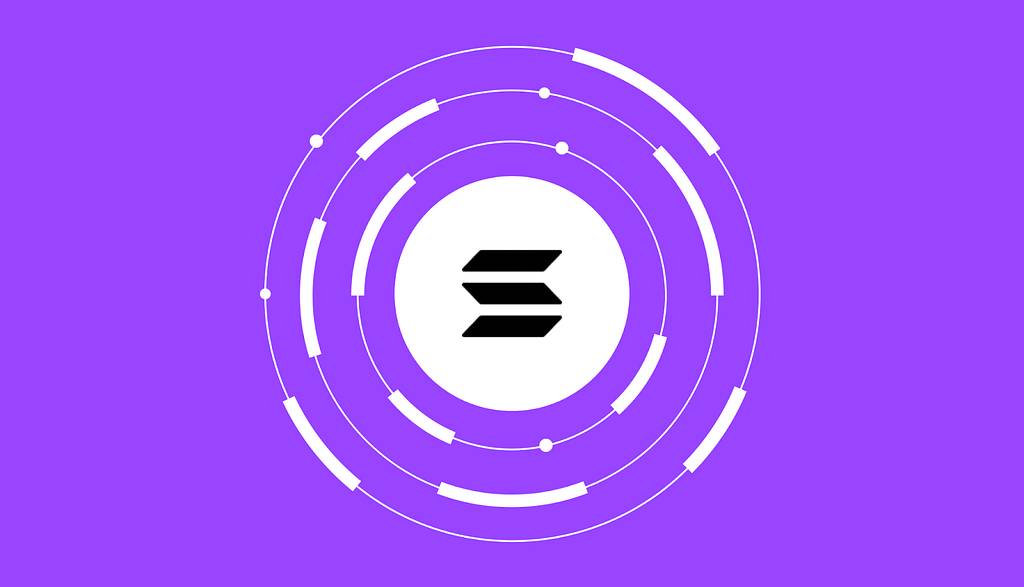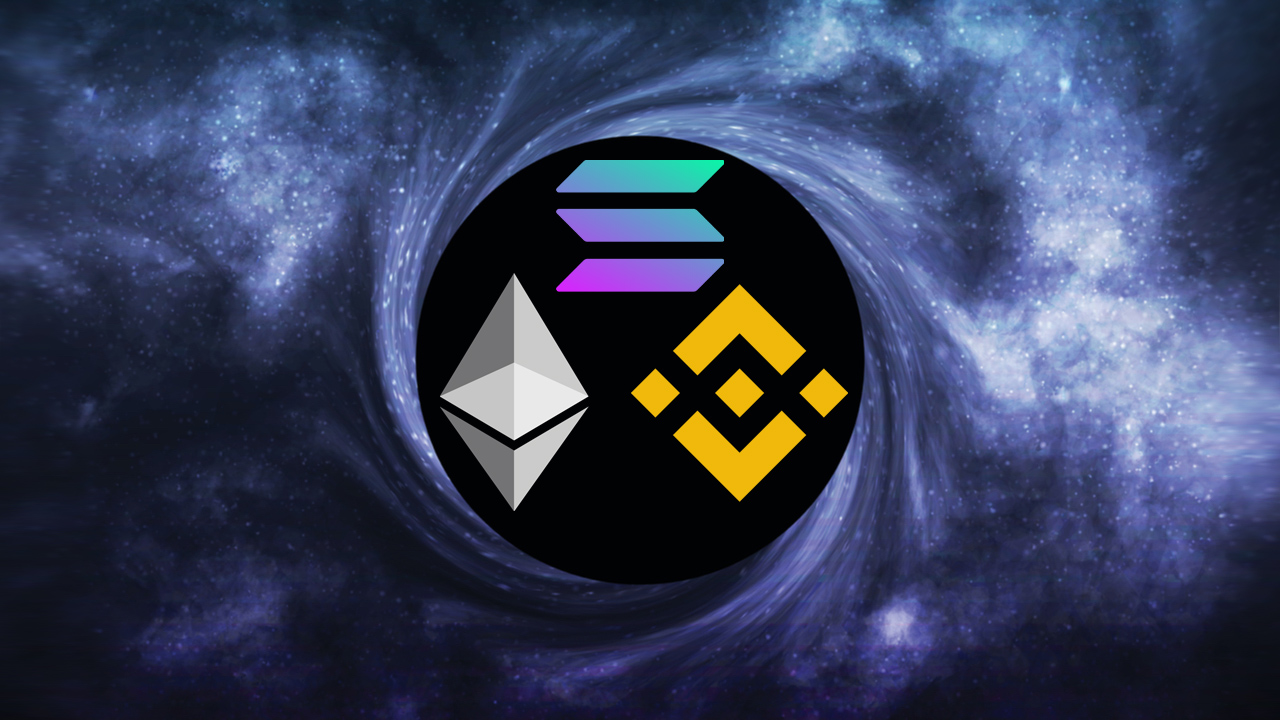
Institutional investments in Solana-based applications surged to $173 million in Q3 2024, marking a significant increase, according to a Messari report.
Update Nov. 1, 2:29 pm UTC: This article has been updated to include quotes from Messari Protocol Services.
Institutional investments in Solana-native blockchain applications have seen a resurgence in the third quarter of 2024.
During the third quarter, 29 Solana-based decentralized applications (DApps) raised a cumulative $173 million, marking a more than 54% increase compared to the previous quarter.

Solana Labs has launched Bond, a new platform that will let non-crypto brands leverage the power of blockchain tech to engage with customers.
Solana Labs, the company behind layer-1 blockchain Solana, could soon be bringing many more non-crypto native brands and their customers into Web3 without many of them even knowing.
As of June 12, the firm has officially launched Bond, its new blockchain-based customer engagement platform aimed at helping brands “drive long-term loyalty.”
Solana Labs says the new platform will address “critical limitations” in today’s loyalty programs, namely, losing connection with the end customer if a product is ever resold or gifted.

Password-stealing malware is being spread by hackers through NFT airdrops purporting to be Solana Phantom security updates.
For the last two weeks, unknown hackers have been airdropping nonfungible tokens (NFTs) to Solana cryptocurrency users masquerading as a new Phantom wallet security update, however, instead of an update, it's malware designed to steal their crypto.
According to BleepingComputer, the hackers are claiming to be from the Phantom team and using NFTS titled "PHANTOMUPDATE.COM" or "UPDATEPHANTOM.COM."
After opening the NFT, users are told a new security update has been issued for the Phantom wallet and can be downloaded by using the enclosed link or the listed website.
To add urgency, the message claims that failing to download the fake security update, “may result in a loss of funds due to hackers exploiting the Solana network.”
The urgency piece is likely related to the Solana-based wallet hack which saw roughly $8 million stolen from 8,000 wallets in August, including those of Phantom wallet users. The security exploit was later linked to vulnerabilities within the Solana-based Web3 wallet service Slope.
Should a victim follow the fake Phantom update instructions, the process ends with malware being downloaded from GitHub which attempts to steal browser information, history, cookies, passwords, SSH keys and other information from the user.
Users who may have inadvertently fallen prey to this scam are recommended to take security precautions such as scanning their computer with antivirus software, securing crypto assets, and changing passwords on sensitive platforms such as bank accounts and crypto trading platforms.
Related: Blockchain security firm warns of new MetaMask phishing campaign
In the past, similar malware-spreading campaigns have employed malware dubbed "Mars Stealer" to steal crypto from unsuspecting users.
An upgrade of the information-stealing Oski trojan of 2019, Mars Stealer targets more than 40 browser-based crypto wallets, along with popular two-factor authentication (2FA) extensions, with a grabber function that steals users' private keys.
by Coinbase Cloud team

Coinbase Cloud’s Solana Archival Nodes can examine historical address balances, run complex queries, and simulate the blockchain state at any given point in the chain’s history.
Coinbase Cloud previously launched secure, dedicated Solana infrastructure nodes via Query & Transact, allowing builders to access and verify data and transaction information from the Solana blockchain.
Today, Coinbase Cloud is expanding that offering with the launch of Solana Archival Nodes. Managing archival nodes in a scalable way is technically challenging due to Solana’s high throughput design (~2–3 blocks/sec) and large data footprint (~100TB for all historical data).
We’re excited about helping to empower developers to build better products and services that contribute to the growth of the Solana community!
Solana is an open source, high-performance, permissionless blockchain that uses highly scalable technology to prioritize transaction throughput, the ability to process a large number of transactions in a short span of time. Solana is currently able to process more than 50,000 transactions per second.
Secure, reliable, and easy-to-use infrastructure is critical for the continued flourishing of the Solana ecosystem. Solana’s high throughput capacity is well-suited for many use cases including trading. The high throughput capacity also requires expertise in developer operations and hardware selection to run a performant node. Nodes require powerful hardware, extremely high bandwidth, and significant protocol expertise to manage participation.
Coinbase Cloud has collaborated closely with the Solana team to support the network as it is growing and scaling securely. We operated one of the first nodes in Tour de Sol, Solana’s incentivized testnet. Since mainnet beta launch, we have helped our clients manage the complexity of participation with secure, tested validator infrastructure run by seasoned protocol engineers and specialists.
Now, we are expanding our Solana offerings to include our Solana Archival Nodes to empower developers interested in building on the blockchain.
With Query & Transact, developers interested in building on Solana can easily run read/write nodes, access data from the blockchain, and build applications and services that connect to Solana.
Even for highly technical teams, running nodes can be an expensive, time-consuming process. It requires strong protocol expertise, staying up-to-date with the latest network changes, and scaling infrastructure to manage potential changes in throughput. These demands are particularly true for Solana read/write infrastructure, given the higher throughput capacity than other protocols.
Coinbase Cloud’s Solana Query & Transact alleviates this challenge and makes it easier to build on Solana. Developers and enterprises interested in building applications and services connected to the Solana network can easily manage their infrastructure from a single platform, and quickly scale their infrastructure based on changing throughput requirements.
We are infrastructure experts with a deep understanding of the Solana network. With Solana Archival Nodes running on Query & Transact read/write infrastructure, you can focus on your product and customers instead of core node infrastructure.
*subject to the terms and conditions set forth in our SLA, some exceptions apply
Disclaimers
This document and the information contained herein is not a recommendation or endorsement of any digital asset, protocol, network, or project. However, Coinbase may have, or may in the future have, a significant financial interest in, and may receive compensation for services related to one or more of the digital assets, protocols, networks, entities, projects, and/or ventures discussed herein. The risk of loss in cryptocurrency, including staking, can be substantial and nothing herein is intended to be a guarantee against the possibility of loss.
This document and the content contained herein are based on information which is believed to be reliable and has been obtained from sources believed to be reliable, but Coinbase makes no representation or warranty, express, or implied, as to the fairness, accuracy, adequacy, reasonableness, or completeness of such information, and, without limiting the foregoing or anything else in this disclaimer, all information provided herein is subject to modification by the underlying protocol network.
Any use of Coinbase’s services may be contingent on completion of Coinbase’s onboarding process and is Coinbase’s sole discretion, including entrance into applicable legal documentation and will be, at all times, subject to and governed by Coinbase’s policies, including without limitation, its terms of service and privacy policy, as may be amended from time to time.
Coinbase Cloud launches Solana Archival Nodes to empower the Solana developer community was originally published in The Coinbase Blog on Medium, where people are continuing the conversation by highlighting and responding to this story.
 Following the hack on July 2, 2022, the team behind the decentralized finance (defi) protocol Crema Finance detailed that after some negotiation, the hacker returned roughly $8 million in crypto assets. According to the team, the hacker agreed to take a white hat bounty worth 45,455 solana. Hacker Returns $8 Million in Crypto to Crema […]
Following the hack on July 2, 2022, the team behind the decentralized finance (defi) protocol Crema Finance detailed that after some negotiation, the hacker returned roughly $8 million in crypto assets. According to the team, the hacker agreed to take a white hat bounty worth 45,455 solana. Hacker Returns $8 Million in Crypto to Crema […] According to the decentralized finance (defi) protocol Crema Finance, the application was hacked on July 2, 2022. A Twitter account called “Solanafm” says the defi protocol lost around $8.7 million from the attack. Crema Finance Vulnerability Causes Defi App to Lose Millions — 6 Flashloans Executed Another defi protocol has lost funds to a hacker […]
According to the decentralized finance (defi) protocol Crema Finance, the application was hacked on July 2, 2022. A Twitter account called “Solanafm” says the defi protocol lost around $8.7 million from the attack. Crema Finance Vulnerability Causes Defi App to Lose Millions — 6 Flashloans Executed Another defi protocol has lost funds to a hacker […]
NFT minting bots on Solana contributed over 4 million transactions per second, knocking validators out of consensus and crashing the network for around seven hours.
The Solana (SOL) network suffered a seven-hour outage overnight between April 30 and May 1 due to a large number of transactions from nonfungible token (NFT) minting bots.
A record-breaking 4 million transactions, or 100 gigabits of data per second, congested the network causing validators to be knocked out of consensus resulting in Solana going dark at roughly 8 PM UTC on April 30.
It wasn’t until seven hours later on May 1, 3 AM UTC that validators were able to successfully restart the main network.
Validator operators successfully completed a cluster restart of Mainnet Beta at 3:00 AM UTC, following a roughly 7 hour outage after the network failed to reach consensus.
— Solana Status (@SolanaStatus) May 1, 2022
Network operators an dapps will continue to restore client services over the next several hours. https://t.co/ezqEYQYKWl
The bots hoarded a popular application used by Solana NFT projects to launch collections called Candy Machine. In a Twitter post by Metaplex, the company confirmed that traffic from bots on their app was partially to blame for the network crash.
Today #Solana mainnet-beta went down partially due to botting on the Metaplex Candy Machine program. To combat this, we have merged and will soon deploy a botting penalty to the program as part of a broader effort to stabilize the network. https://t.co/QaAZT3VxXz
— Metaplex (@metaplex) May 1, 2022
Metaplex shared it would be implementing a 0.01 SOL or $0.89 charge on wallets that attempt to complete an invalid transaction which the firm said: “is typically done by bots that are blindly trying to mint.”
The outage caused the price of SOL, the blockchain's native coin, to crash by nearly 7% to $84, although trading since has seen prices recover to just over $89.
The most recent outage marks the 7th time this year that Solana has suffered outages according to its own status reporting. Between January 6 and January 12 in 2022 the network was plagued with issues causing partial outages for between 8 and 18 hours.
Solana said “high compute transactions” caused a reduction in network capacity to “several thousand” transactions per second (TPS), much lower than the advertised 50,000 TPS.
Later in January, over 29 hours of downtime was recorded between the 21st and 22nd of the month, with excessive duplicate transactions again causing network congestion and outages on the blockchain.
Related: Scalability or stability? Solana network outages show work still needed
In September 2021, Solana was hit with a major outage with the network offline for over 17 hours. Solana attributed that outage to a distributed denial-of-service (DDOS) attack on an initial DEX offering with bots spamming the network with 400,000 per second. Industry observers commented on what has been often touted as an "Ethereum killer."
At this point Solana should start posting business hours
— pseudotheos in (@pseudotheos) May 1, 2022
Solana was the second network to strain under notable transaction volume related to NFTs over the weekend. The Ethereum (ETH) transaction cost surged to an average of over $450 due to a release of 55,000 NFTs by Yuga Labs with some users paying up to 5 ETH or $14000 in gas fees for transactions and much more to mint one of the NFTs.
 During the first week of September, the Wormhole Network’s ethereum ↔ solana bridge was introduced to the Solana community and the following week, developers released a bi-directional connection for blockchain non-fungible token (NFT) collectibles. On Monday, the Wormhole dev team revealed it has added Binance Smart Chain support to the token and NFT bridge platform. […]
During the first week of September, the Wormhole Network’s ethereum ↔ solana bridge was introduced to the Solana community and the following week, developers released a bi-directional connection for blockchain non-fungible token (NFT) collectibles. On Monday, the Wormhole dev team revealed it has added Binance Smart Chain support to the token and NFT bridge platform. […]
The 14th largest cryptocurrency by market cap jumped by more than 55% after bottoming out at $20.14 on Tuesday.
An overnight bounce across the cryptocurrency assets this Wednesday saw Solana (SOL) outpacing its top rivals, including Bitcoin (BTC) and Ether (ETH).
The SOL/USD exchange rate surged 55.10% to $31.58 on Wednesday after bottoming out at $20.14 in the previous session. Its move uphill came in the wake of an overall crypto market retracement that, in turn, followed a brutal crash in response to a full-fledged crypto ban in China.
Solana was among the loss-bearers at the beginning of this week. SOL/USD plunged by more than 42% after opening Monday at $35.22. Similarly, Bitcoin lost 19.07% in the same period while Ether, the second-largest cryptocurrency and Solana's blockchain rival, dipped 24.75%.
But all the top crypto tokens ticked back after 48 hours of dizziness. Bitcoin bounced 19.44% to $34,400 from its sessional low of $28,800. Meanwhile, Ethereum rebounded by up to 20.29% to $2,045 after testing $1,700 as support, albeit much lesser than Solana.

And so it appears, Solana had enough catalysts supporting its wilder recovery move in the late Tuesday and early Wednesday sessions. The three of them are listed as follows.
Solana attracting higher bids during the late Tuesday recovery session coincided with the announcement that Pyth, a decentralized financial market data distribution network, has added LMAX Digital, an institutional exchange operator, as its data provider.
We are thrilled to announce @LMAX, the leading independent operator of institutional execution venues for FX and cryptocurrency trading, as the first institutional exchange joining @PythNetwork as a data provider!
— Pyth (@PythNetwork) June 22, 2021
Read more at: https://t.co/7s8kYc6emE pic.twitter.com/zfDGuXBDNK
In detail, Pyth Network operates atop Solana's public base-layer, proof-of-stake blockchain protocol that is optimized for scalability. Solana proposes to assist developers in creating decentralized applications (dApps) without having to design around performance bottlenecks.
As for SOL, the token serves as a native currency within the Solana ecosystem. Users stake their SOL holdings directly on the network or delegate them to an active validator. In return, stakers are promised to be given inflation rewards. The feature will go live alongside Solana's Full Mainnet release.
Users can use SOL to pay for transaction and smart contracts fees.
Following its partnership with LMAX, Solana-backed Pyth would receive foreign exchange and cryptocurrency trading data on its blockchain. In turn, the oracle network work would feed the institutional data to decentralized finance projects.
Solana has raised almost $26M via the sales of its SOL tokens to this date.
But the blockchain protocol itself led a funding round for PARISIQ, a blockchain data monitoring platform, to raise $3M at the end of last week. According to Solana founder Anatoly Yakovenko, having PARISIQ on board would give their projects “fewer headaches" as they build out their stack.
Rumors that Solana would raise another $450M to develop an 'Ethereum Killer' might also have kept SOL's upside bias intact despite the June 22 crash. However, the Solana team did not confirm the report. But they didn't deny it either.

At the time of the PARSIQ announcement, on June 16, SOL/USD was trading flat. But the China crypto ban news shook up its stable sentiment. The pair's recent major declines apprehensively appeared out of FUDs (fear, uncertainty, and doubt). But based on mergers alone, the Solana ecosystem has emerged as a blockchain powerhouse.
In May, for instance, Solana allotted $20mm to support projects on its network with additional assistance from MATH Global. The team also raised $60mm to support blockchain-enabled projects in Brazil, Russia, India, and Ukraine.
Related: Bitcoin price 'very near bottom' with $30K dip, says bullish institutional report
Solana also partnered with ROK Capital to launch a $20mm fund to expand in South Korea.
SOL's latest move downhill also had it test a triple-support confluence, providing daytraders psychological entry levels in addition to Solana's development as a blockchain project.

The yellow bar in the chart above offered the first layer of price support, given its ability to cap downside attempts in recent history. Second, SOL received an additional bullish floors from the red horizontal line at $24.56, also with a history of keeping the Solana token's upside bias intact, and the 200-day simple moving average (200-day SMA; the saffron wave).
The SOL/USD's relative strength index (RSI was also marginally above its oversold threshold of 30. Traditionally, traders perceive a lower RSI reading as their cue to enter the market.
Yes, number go up.
— Hsaka (@HsakaTrades) June 23, 2021
More likely, given prior performance after price action like yesterday, $SOL has become a defacto buy the dip asset among many traders.